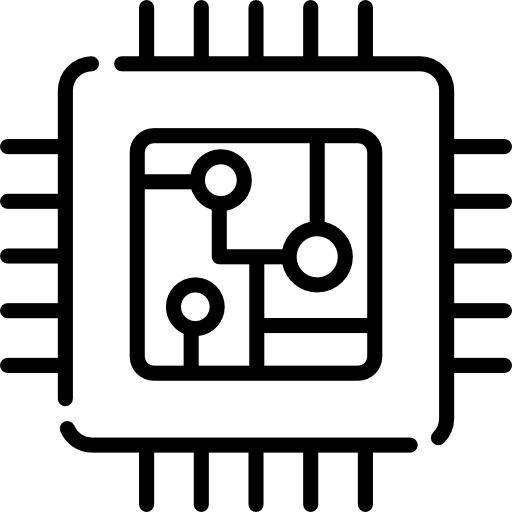Contra Asset: What It Is and How a Contra Asset Account Works
If you offer credit terms to your customers, you probably know that not all of them will pay. Creating this contra asset account builds in a safeguard against overstating your accounts receivable balance. Writing off your obsolete inventory in this manner allows you to expense the cost of the obsolete inventory while also decreasing your current inventory balance using the contra asset account. Inventory obsolescence is an expense account, while the allowance for obsolete inventory is a contra asset account, which aims to reduce the inventory valuation on your balance sheet. Hopefully, you have a pretty clear idea of contra asset meaning—no need to ask to define contra asset accounts anymore. Including contra asset accounts on your balance sheets can be hugely beneficial for your business.
- There are two major methods of determining what should be booked into a contra account.
- Whether reported as separate lines on the financial report or as a cumulative value, the net amount of the pair of accounts is called the “net book value” of the individual asset.
- Including contra asset accounts on your balance sheets can be hugely beneficial for your business.
- Hence, the term valuation account represents all types of balance sheet accounts related to their corresponding balance sheet accounts.
This account appears next to the current asset Accounts Receivable. The account Allowance for Doubtful Account is credited when the account Bad Debts Expense is debited under the allowance method. The use of Allowance for Doubtful Accounts allows us to see in Accounts Receivable the total amount that the company has a right to collect from its credit customers. The credit balance in the account Allowance for Doubtful Accounts tells us how much of the debit balance in Accounts Receivable is unlikely to be collected. As you saw in the example, contra accounts can be an important part of your financial statement analysis, but they are hard to find. Companies bury them in the footnotes and often don’t break out the actual calculation.
Most accounts receivable would just be the time between purchase and credit card settlement. This account serves two purposes — tracking total depreciation expenses while providing you with the accurate book value of the asset being depreciated. As evident from the table below, each contra account has a parent account whose normal balance is often exactly opposite of the normal balance of the relevant contra account.
These three types of contra accounts are used to reduce liabilities, equity, and revenue which all have natural credit balances. Therefore, for these three, the debit balance actually represents a negative amount. Key examples of contra asset accounts include allowance for doubtful accounts and accumulated depreciation. Accumulated depreciation reflects the reduction in value of a fixed asset. The two most common examples of contra asset accounts are the accumulated depreciation contra account, and the allowance for doubtful debts contra account. They are also helpful for keeping the books balanced and creating a clear trail of financial breadcrumbs for historical review and reporting.
What is a contra account?
Our experts love this top pick, which features a 0% intro APR for 15 months, an insane cash back rate of up to 5%, and all somehow for no annual fee. Contra accounts provide more detail to accounting figures and improve transparency in financial reporting. Suppose a clothing business has sold $50,000 of inventory on credit. In this way, the historical cost, the amount of write-off, and the book value of an asset can always be seen on the balance sheet.
Any products that are sold at a discount or returns are deducted from gross revenue to produce net revenue as the top line on the income statement. An asset account which is expected to have a credit balance (which is contrary to the normal debit balance of an asset account). For example, the contra asset account Allowance for Doubtful Accounts is related to Accounts Receivable. The contra asset account Accumulated Depreciation is related to a constructed asset(s), and the contra asset account Accumulated Depletion is related to natural resources. Contra asset accounts are, as the name implies, accounts that are contrary to popular belief. Contra asset accounts have a credit balance as compared to a debit balance that most other types of accounts have.
Contra equity accounts carry a debit balance and reduce equity accounts. Contra revenue accounts reduce revenue accounts and have a debit balance. An account with a balance that is the opposite of the normal balance. For example, Accumulated Depreciation is a contra asset account, because its credit balance is contra to the debit balance for an asset account.
When a contra asset transaction is created, the offset is a charge to the income statement, which reduces profits. To illustrate, let’s use the contra asset account Allowance for Doubtful Accounts. Since it is a contra asset account, this allowance account must have a credit balance (which is contrary to the debit balances found in asset accounts).
Contra Liability Account: What it is, How it Works, Example
For this reason, contra accounts are primarily seen as having negative balances because they are used to reduce the balance of another account. Contra accounts are used to reduce the value of the original account directly to keep financial accounting records clean. Contra equity reduces the total number of outstanding shares on the balance sheet.
Reserve for obsolete inventory is a contra asset account used to write down the inventory account if inventory is considered obsolete. Excess, stored inventory will near the end of its lifespan at some point and, in turn, result in expired or unsellable goods. In this scenario, a write-down is recorded to the reserve for obsolete inventory. You may not need to use contra asset accounts right now, but as your business grows, using contra asset accounts will likely become a necessity.
Contra asset accounts
Allowance for doubtful accounts (ADA) is a contra asset account used to create an allowance for customers who are not expected to pay the money owed for purchased goods or services. The allowance for doubtful accounts appears on the balance sheet and reduces the amount of receivables. The equity section of the balance sheet is where the shareholder’s claims to assets are reported. The main contra equity account is treasury stock, which is the balance of all stock repurchased by the company.
What Is the Benefit of Using a Contra Account?
It is critical that companies estimate their allowance for bad debt correctly; otherwise, the resulting expected future revenue will be incorrect. In the above example, the debit to the contra liability account of $100 lets the company recognize that the bond was sold at a discount. Note that accountants use contra accounts rather than reduce the value of the original account directly to keep financial accounting records clean.
For example, an asset was purchased by a company for $100,000 – that is, the historical cost of the asset was $100,000 – and its contra asset counterpart has a balance of $30,000. Therefore, the asset’s net value (or the book value) will be $70,000. Note that the asset account balance represents the purchase price of the asset in question, also known as its historical cost. If you’re valuing a low-growth company based on its equipment assets, you want to use the net value to be conservative.
An example of a contra liability account is the bond discount account, which offsets the bond payable account. A contra liability account is not classified as a liability, since it does not represent a future obligation. Even small businesses benefit immensely from contra asset accounts. Contra assets are accounts in the general ledger—where you enter your transactions—that carry a balance used to offset the account with which it is paired. Instead of debiting the asset account directly, the contra asset account balance will be credited (reduced) separately.
When a company repurchases shares, it increases the fractional ownership of all remaining shareholders. Contra liabilities are common in companies that sell bonds to raise capital. To drum up interest in the bond, the company will sell it at a discount. For example, a bond with a principal amount of $1,000 may be sold for only $950. The bond is listed on the balance sheet at the full amount of $1,000, but the cash received is just $950, so a contra liability for the discount is listed to make the entry balance. In either case, using these accounts can help you better manage depreciation expense, keep your accounts receivable balance accurate, and properly dispose of and account for obsolete inventory.
In bookkeeping, a financial reporting for non-traditional insurance is an asset account in which the natural balance of the account will either be a zero or a credit (negative) balance. The account offsets the balance in the respective asset account that it is paired with on the balance sheet. Home Depot reports net receivables and net property and equipment, implying that both are reduced by contra assets. We’ll need to dig into the footnotes to find out what the contra accounts are.






